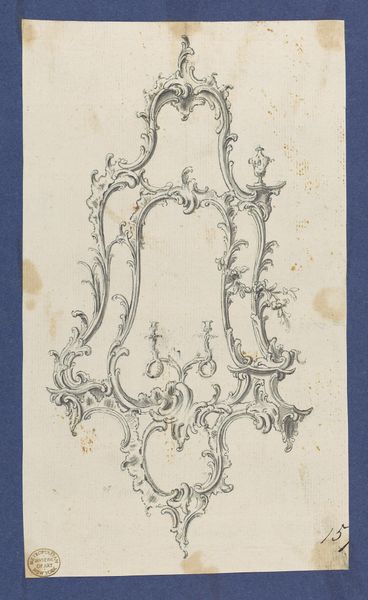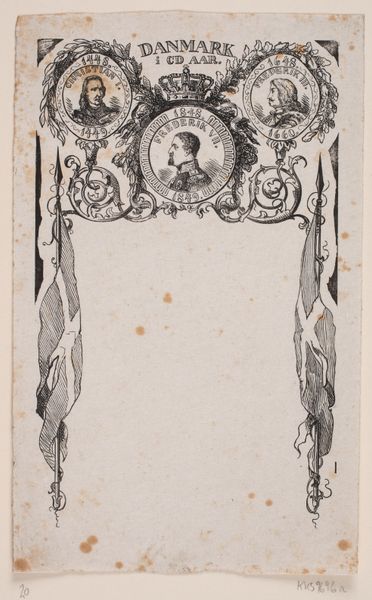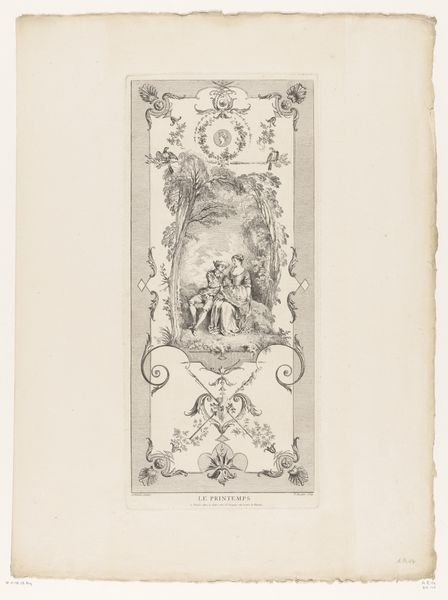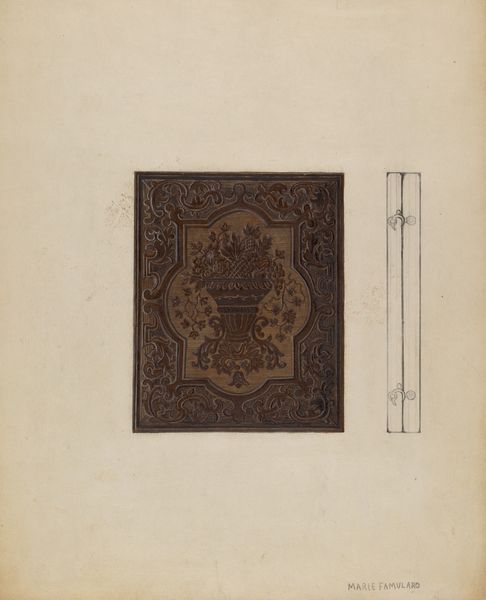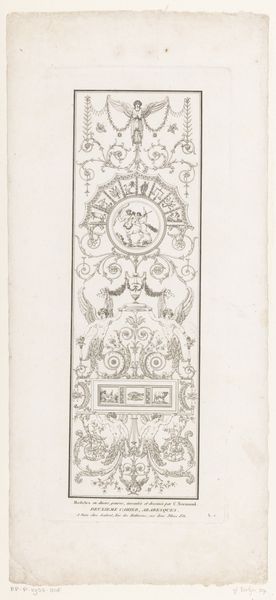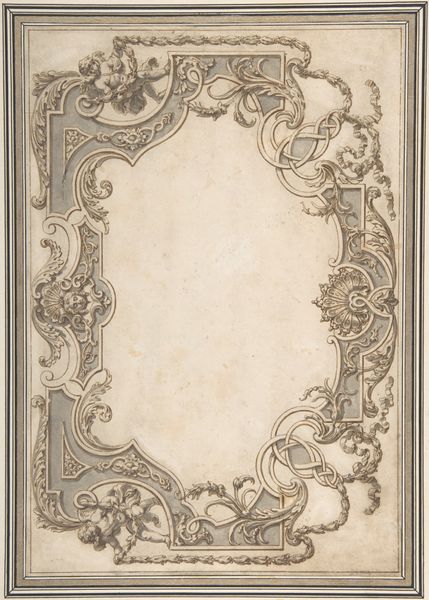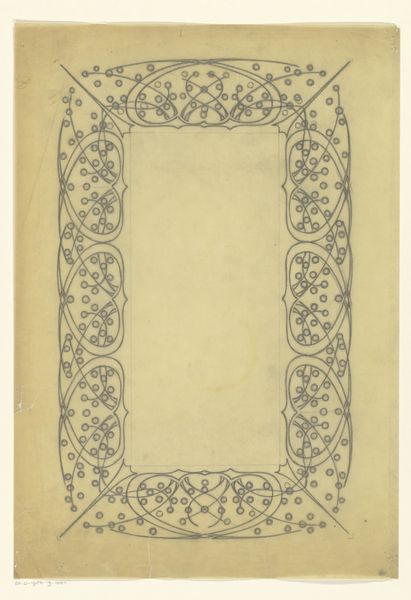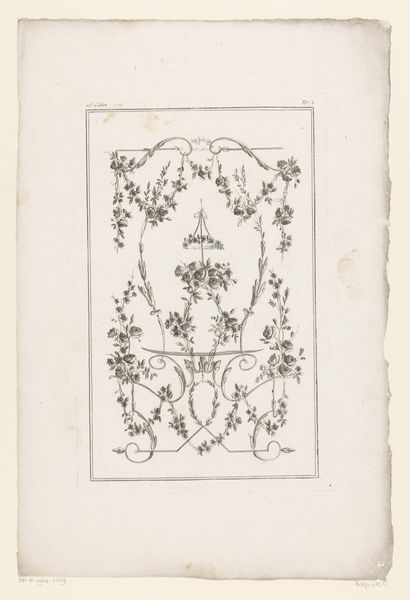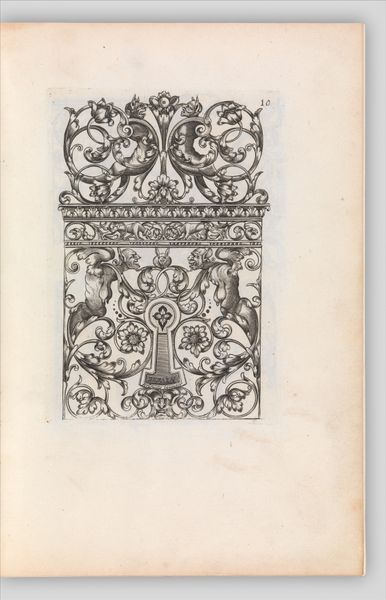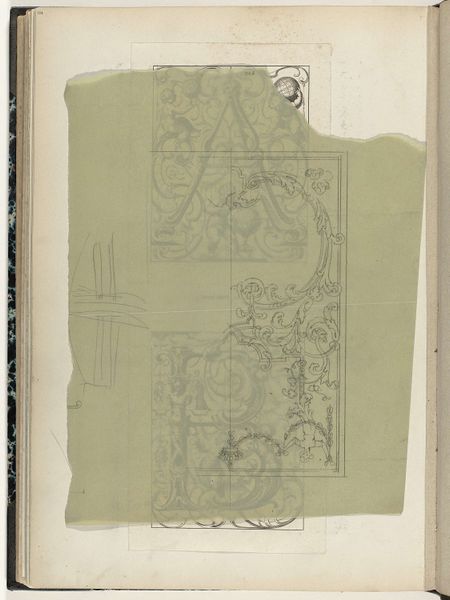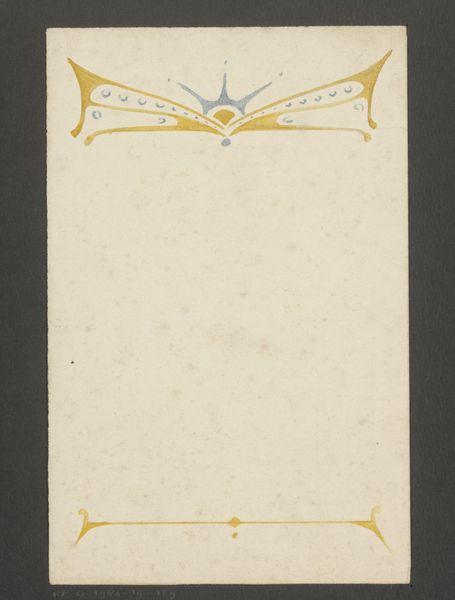
drawing, graphic-art, paper, ink
#
drawing
#
graphic-art
#
art-nouveau
#
paper
#
ink
#
decorative-art
Dimensions: height 200 mm, width 130 mm
Copyright: Rijks Museum: Open Domain
Editor: Here we have Carel Adolph Lion Cachet’s "Ontwerp voor ex libris van Johanna Pabst," created sometime between 1874 and 1945. It’s an ink drawing on paper, and it strikes me as having a rather formal, almost severe quality, despite its decorative Art Nouveau style. What stands out to you? Curator: The starkness, for me, underscores the limitations often imposed upon women in that era, even within the apparent freedom of Art Nouveau. A bookplate signifies ownership, intellectual property; yet, Johanna Pabst’s name is inscribed within a rigid, almost tombstone-like frame. It prompts the question: to what extent was she truly empowered in possessing and marking her own books? Was this a genuine expression of autonomy, or a symbolic gesture that masked societal constraints? Editor: I hadn't thought about it in terms of social constraints. So, the visual rigidity is perhaps communicating something deeper? Curator: Exactly. Consider the Art Nouveau movement itself – often perceived as liberating and flowing, but frequently employed to adorn objects that reinforced existing class structures. How does this decorative style, often associated with femininity and natural forms, function when used for a woman's personal emblem? Does it amplify her agency or confine her within the expectations of her gender and social standing? Is it possible Cachet was making a subtle commentary himself? Editor: So, you are saying this drawing doesn't just show the aesthetics of the time; it makes us question the real role of women within it? Curator: Precisely! It's a tiny window into the complexities of identity, ownership, and societal expectations for women in a period of supposed artistic and social liberation. By situating it within the history of feminist thought, we see that seemingly benign or beautiful art objects can contain radical undertones and spark very crucial questions about gender and power. Editor: Wow, that's given me a lot to consider. I’ll definitely look at Art Nouveau differently from now on. Curator: That's the power of art – it reflects and questions, if we allow it.
Comments
No comments
Be the first to comment and join the conversation on the ultimate creative platform.
